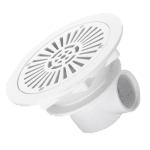Indoor swimming pool designs for homes
Designing an indoor swimming pool for a home involves integrating functionality, aesthetics, and practicality into a space that enhances both leisure and property value. Unlike outdoor pools, indoor pools offer year-round usability and privacy, making them an attractive option for homeowners seeking to enjoy swimming regardless of the weather or time of day.
The first consideration in designing an indoor swimming pool is its location within the home. Ideally, it should blend seamlessly with the overall architecture and flow of the house. Common locations include:
- Basement: This is a popular choice for many homeowners as it allows for a large, open space that can accommodate the pool along with changing rooms, showers, and possibly a lounge area.
- Extension or Addition: Some homes have the space to add an indoor pool as an extension to an existing structure, providing direct access from the main living areas or through a dedicated corridor.
- Atrium or Conservatory: For those seeking a more open and airy feel, an indoor pool housed within a glass-enclosed atrium or conservatory can create a stunning visual centerpiece.
Design Elements
Pool Shape and Size (Indoor swimming pool designs for homes)
The shape and size of the pool depend on the available space and the intended use. Rectangular pools are classic and suit most architectural styles, while free-form pools can add a more natural, organic feel. Considerations for depth should also be made based on whether the pool will be used for diving, exercise, or leisurely swimming.
Materials and Finishes (Indoor swimming pool designs for homes)
Choosing materials that are both functional and aesthetically pleasing is crucial. Common options include:
- Pool Linings: Tiles are durable and offer a wide range of colors and patterns. They are easy to clean but may require regular maintenance.
- Flooring: Non-slip flooring around the pool area is essential for safety. Options include textured tiles, natural stone, or even specialized pool decking materials.
- Walls: Depending on the design, walls can be tiled, painted, or clad in materials like wood or stone to complement the overall theme of the space.
Lighting and Ambiance (Indoor swimming pool designs for homes)
Indoor pools offer a unique opportunity to play with lighting to create different moods. Natural light can be maximized with skylights or large windows in conservatory-style designs. For evening use, LED lighting integrated into the pool itself or along the edges can create a serene, inviting atmosphere.
Functional Considerations
Ventilation and Humidity Control (Indoor swimming pool designs for homes)
Proper ventilation is essential to prevent the buildup of humidity and moisture, which can lead to mold and mildew. Mechanical ventilation systems tailored to the size of the pool and surrounding space are typically installed to ensure air quality and comfort.
Heating (Indoor swimming pool designs for homes)
Maintaining a comfortable water temperature year-round requires an efficient heating system. Options include electric heaters, heat pumps, or even solar heating depending on the location and budget considerations.
Safety Features (Indoor swimming pool designs for homes)
Safety should always be a priority when designing an indoor pool. This includes:
- Non-slip surfaces around the pool area.
- Safety covers when the pool is not in use.
- Proper fencing and barriers to prevent unsupervised access, especially important if there are children or pets in the household.
Integration with Living Spaces (Indoor swimming pool designs for homes)
An indoor pool can be more than just a place to swim; it can serve as an extension of the living areas, offering relaxation and entertainment options. Consider including:
- Poolside Seating: Lounge chairs, benches, or even a small dining area for poolside meals.
- Spa or Hot Tub: Integrating a spa area adjacent to the pool can enhance the overall experience and provide additional relaxation benefits.
- Entertainment Systems: Built-in sound systems, TVs, or even a fireplace can create a luxurious atmosphere for entertaining guests or enjoying quiet moments.
Indoor swimming pool designs for homes offer a luxurious and versatile way to enjoy swimming year-round. Unlike outdoor pools, indoor options provide protection from the elements, allowing homeowners to create a private oasis regardless of the weather. Here are key considerations and design ideas to inspire your indoor pool project.
1. Space Optimization (Indoor swimming pool designs for homes)
Maximizing space is crucial when designing an indoor pool. Assess the available area to determine the pool’s dimensions and shape. A rectangular pool is ideal for swimming laps, while a freeform design can create a more natural, relaxed vibe. Utilize vertical space by incorporating multi-level designs or a sunken pool for added depth and interest.
2. Ventilation and Humidity Control (Indoor swimming pool designs for homes)
Proper ventilation is essential for indoor pools to manage humidity levels and prevent mold growth. Installing a dehumidification system ensures the air remains fresh and comfortable. Consider large windows or skylights to allow natural light to flood the space, creating an open and inviting atmosphere.
3. Materials and Aesthetics
Choosing the right materials is vital for both aesthetics and safety. Non-slip tiles or natural stone for the pool deck enhance safety and add a luxurious feel. For the pool interior, options such as mosaic tiles or fiberglass can create a polished look. Incorporating glass walls can offer stunning views of the outside while maintaining privacy.
4. Lighting Solutions
Lighting plays a critical role in indoor pool design. A combination of ambient, task, and accent lighting can create a warm and inviting environment. LED lights in various colors can be used to enhance the mood, while underwater lights can illuminate the pool for evening enjoyment.
5. Amenities and Features
Enhance the indoor swimming experience by adding amenities such as a hot tub, sauna, or steam room. These features not only promote relaxation but also make your indoor pool area a wellness retreat. Swim-up bars or built-in seating can further elevate the enjoyment of your pool space.
6. Landscaping and Decor
Incorporating greenery and decorative elements can soften the indoor environment and create a tranquil ambiance. Potted plants, water features, or even an indoor garden can enhance the aesthetic appeal. Choose decor that complements the pool’s design, such as modern furniture or comfortable loungers.
Conclusion
Designing an indoor swimming pool for a home involves careful planning and consideration of various factors, from structural integrity and ventilation to aesthetic appeal and functional use. It’s a significant investment that can greatly enhance the quality of life for homeowners who enjoy swimming and entertaining year-round. By integrating these elements thoughtfully, a well-designed indoor pool becomes not just a feature but a focal point of the home, offering both relaxation and recreation in a private, controlled environment.


















